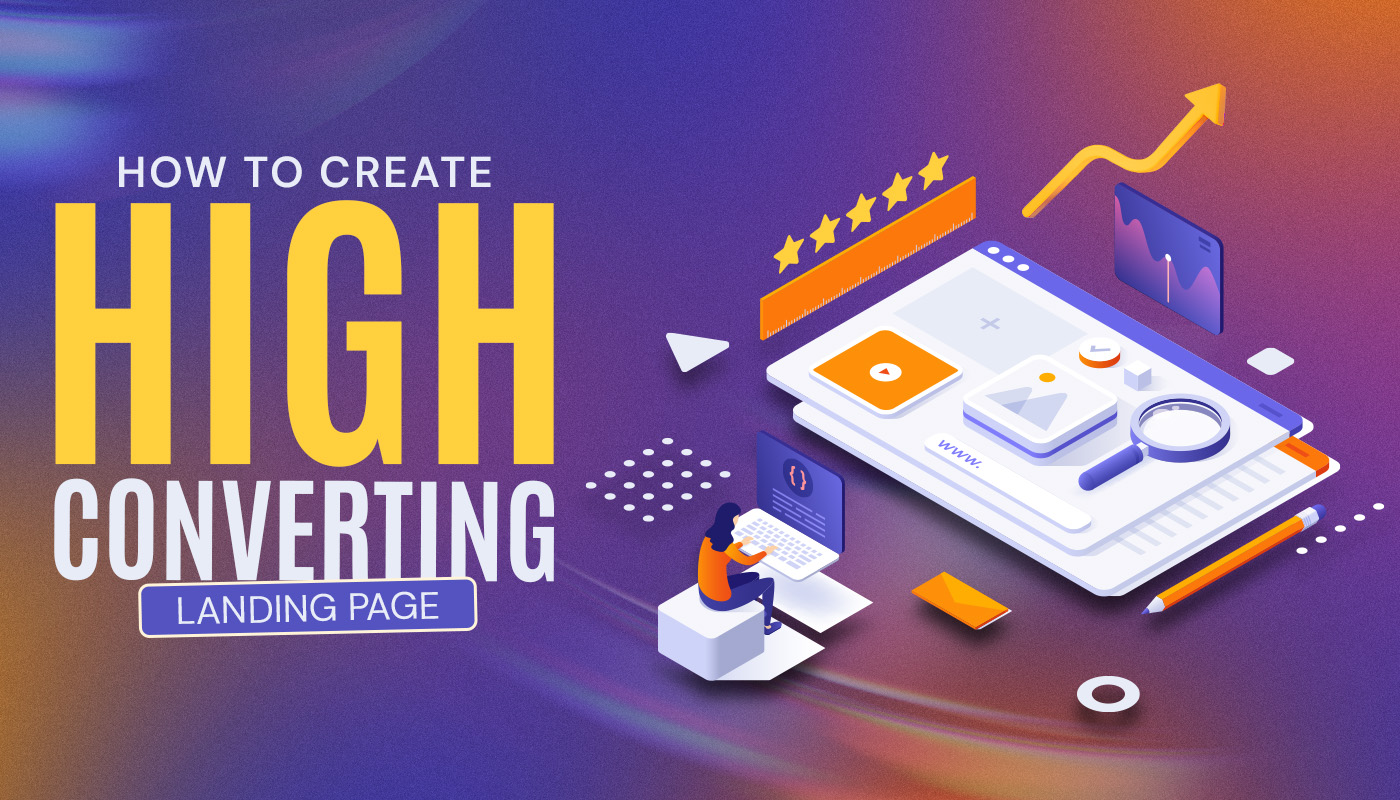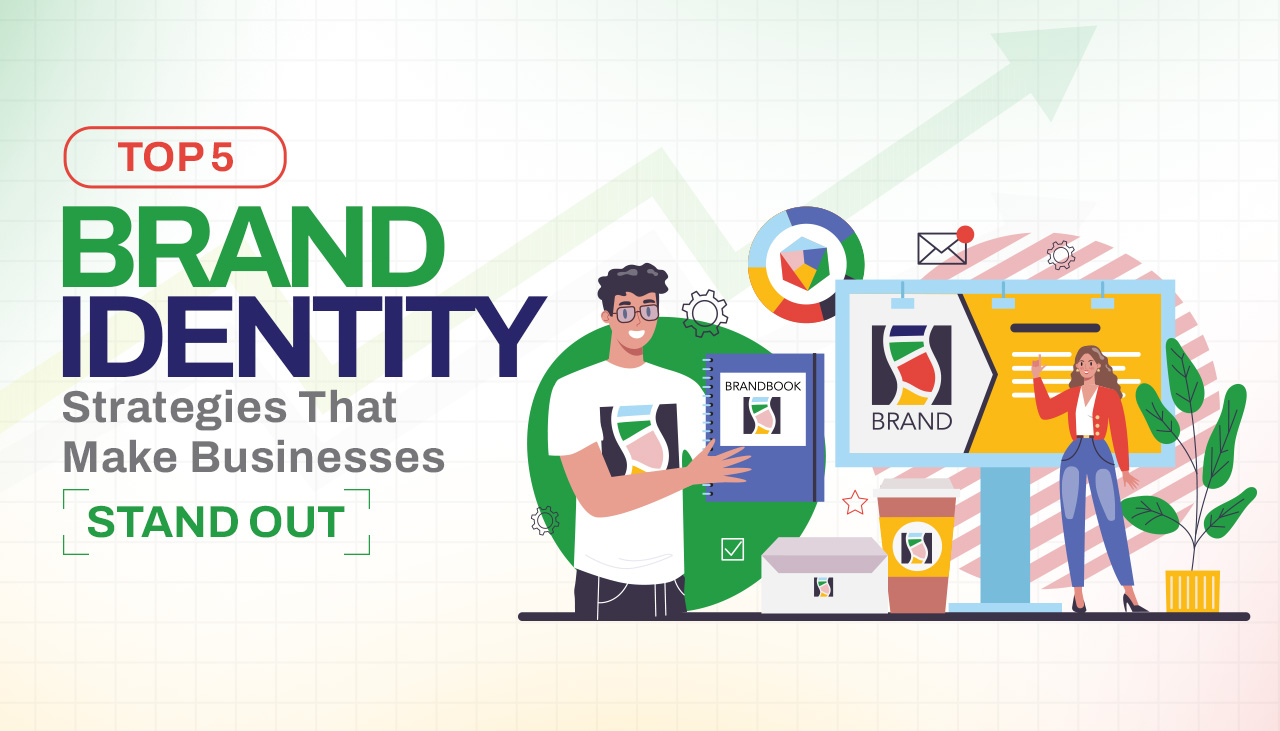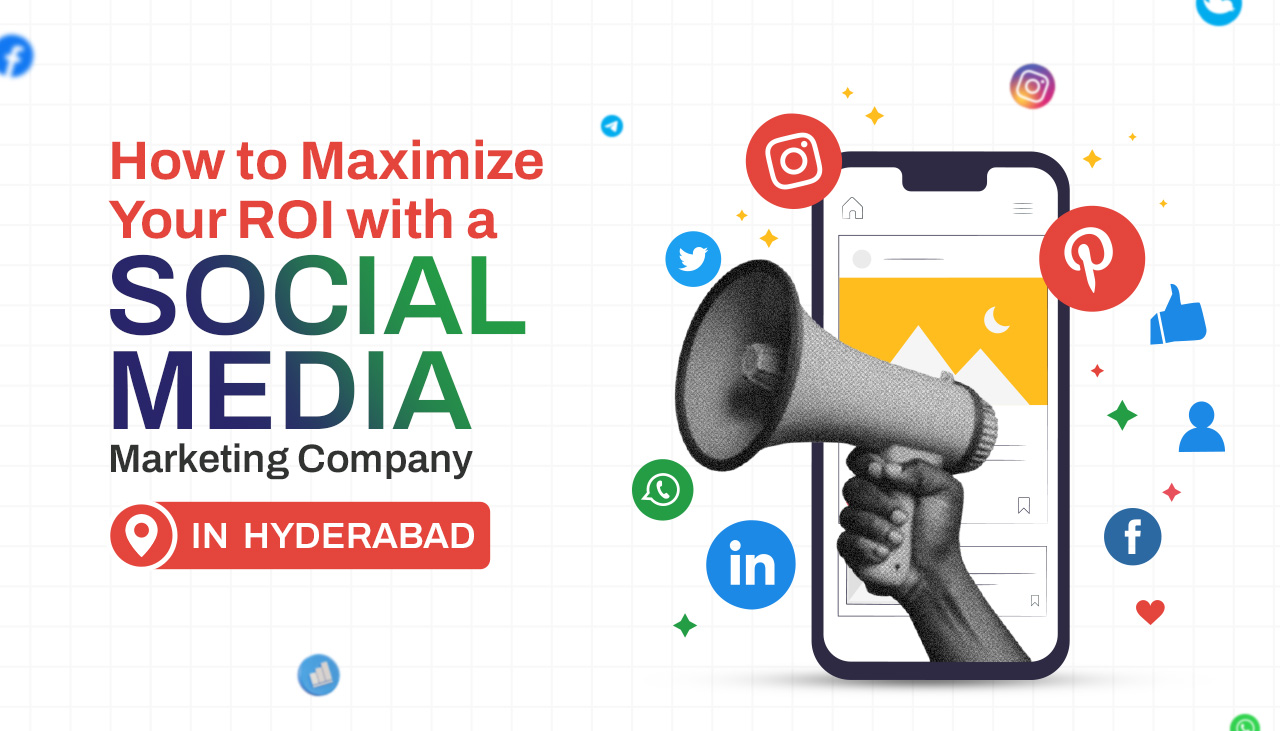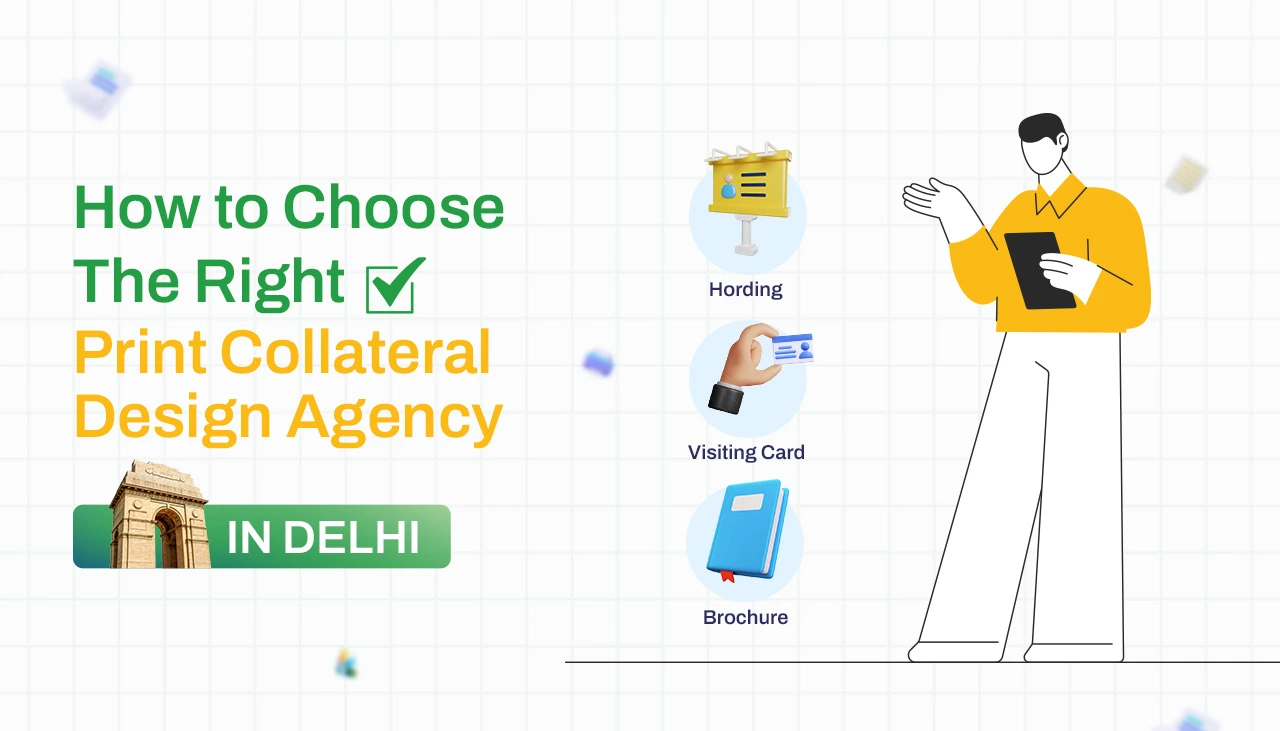In today’s fast-moving digital world, every click comes at a cost—and where it lands can make or break your campaign. That’s why landing pages aren’t just useful—they’re mission-critical. Built for a single goal, a well-crafted landing page can turn browsers into buyers faster than any homepage ever could.
If your digital ad clicks aren’t turning into leads, the issue isn’t the ad—it’s the landing page. From our experience working with brands across India, we’ve observed a consistent pattern: most landing pages fail because they attempt to do too much, say too little, or speak to everyone at once. This isn’t a list of flashy tricks. It’s a straightforward guide to building landing pages that work—focused, simple, and locally relevant.
Whether you’re in real estate, e-commerce, or running the best digital marketing business in Delhi, understanding the anatomy of high-converting landing pages is essential. Let’s break down what makes them click.
What Is a Landing Page?
A landing page is a web page users “land” on after clicking an ad, link, or email. Its sole purpose is to prompt a specific action—such as signing up, downloading, or making a purchase—without distractions.
Unlike a homepage or service page, a landing page has minimal navigation and is highly focused on a single conversion goal, often linked to a specific campaign.
Why Landing Pages Matter
Landing pages are a cornerstone of successful digital marketing campaigns. Here’s why:
- Higher conversion rates: Focused messaging leads to more sign-ups, purchases, or inquiries.
- Improved ad performance: Google Ads and Meta algorithms reward relevance and quality.
- Better audience segmentation: Create tailored landing pages for specific audiences or campaigns.
- Clear data insights: Easy A/B testing and tracking of user behavior.
For the best digital marketing website in Delhi, well-optimized landing pages are what separate a high-ROI campaign from a wasteful one.
Key Elements of a High-Converting Landing Page
Compelling Headline
Your headline is the very first impression visitors get when they land on your page. It must immediately capture attention while communicating the core benefit of your offer. A great headline doesn’t try to be clever—it tries to be clear. It should align with the user’s intent and the promise made in the ad or email that brought them to your page. When crafted effectively, the headline instantly assures the visitor they’ve arrived at the right place and encourages them to continue reading.
Subheadline with Support
Right beneath the headline, the subheadline serves as a supporting sentence or phrase that adds more detail to the promise made above. It should elaborate on what’s being offered and why it matters. This is your chance to reinforce interest and move the visitor closer to understanding the value of the page. In essence, while the headline hooks the user, the subheadline begins to reel them in.
Hero Image or Video
A striking hero image or a short, compelling video can greatly enhance a landing page’s effectiveness. Visuals convey emotions and messages more effectively than text, enabling users to form a quick impression. Whether it’s an image of the product, a smiling customer, or a short demo, your hero section should visually represent the transformation or value you’re offering. Videos, especially explainer or testimonial clips, can also boost engagement and keep users on the page longer.
Call to Action (CTA)
The CTA is the heartbeat of your landing page—it’s what you want the visitor to do. Whether it’s filling out a form, making a purchase, or downloading a guide, your CTA should be clear, actionable, and impossible to miss. Use contrasting colors, large fonts, and persuasive copy, such as “Get Started Now” or “Book Your Free Demo.” Repeating the CTA strategically across the page ensures it’s always within reach, no matter where users are in their scroll.
Social Proof
In a digital space crowded with choices, trust becomes a key factor in conversions. Adding testimonials, client logos, star ratings, or media mentions reinforces credibility and builds confidence. Real quotes from real customers, ideally with names and photos, add authenticity. For businesses striving to be seen as the best digital marketing business in Delhi, showcasing successful case studies or positive reviews from local clients can significantly increase conversion rates.
Benefit-Oriented Copy
Your landing page copy should focus more on the benefits of your offer than just the features. Users don’t want to know what your product does—they want to know how it helps them. Use your copy to paint a picture of transformation: What does life look like before and after they use your solution? Speak directly to their pain points and position your offer as the solution, using relatable, easy-to-understand language throughout.
Lead Capture Form or Conversion Point
This is where the actual conversion happens. Your form should be simple and frictionless—only ask for the information you truly need. Long forms can deter users, so start with the basics, such as name and email, and consider using multi-step forms for more detailed submissions. If you’re offering something in exchange (like a guide or demo), make sure the value is communicated right next to the form to encourage action.
Trust Indicators
Beyond social proof, additional trust signals like money-back guarantees, SSL certificates, satisfaction badges, or affiliations with reputable organizations can further reassure visitors. These subtle cues tell users that your business is legitimate, secure, and professional. Especially for service providers or e-commerce businesses in competitive markets like Delhi, these indicators are vital to reducing hesitation and increasing conversion potential.
Steps to Create a Landing Page That Converts
Creating a high-converting landing page isn’t about flashy design or overcomplicated strategies—it’s about purpose, clarity, and precision. Below is a step-by-step guide to building landing pages that turn casual visitors into leads and loyal customers.
Step 1: Set a Clear Goal
Before designing anything, define a single, measurable goal for your landing page. Too many pages fail because they try to do everything at once. A focused objective ensures your copy, design, and CTA all guide the visitor toward one clear action.
Some common goals include:
- Downloading an eBook or whitepaper
- Booking a free consultation or demo
- Registering for a webinar or event
Making a limited-time purchase
Your landing page should do just one of these—nothing more.
Step 2: Understand Your Audience
The success of your landing page heavily depends on how well you understand your audience. Take time to research your ideal customer, their challenges, motivations, and the kind of language they respond to. A landing page built without empathy is just another piece of content. One built with insight becomes a conversion tool.
Questions to guide your research:
- What are their biggest pain points?
- What benefits are they looking for?
- What language or tone will resonate best with them?
- What would make them trust your offer?
Tailor every element—copy, visuals, and structure—to speak directly to that audience.
Step 3: Write a Compelling Value Proposition
Your value proposition answers the most important visitor question: “Why should I care?” This statement should be prominently placed, clear, and tightly aligned with your target’s interests. Avoid jargon or vague claims—be specific and relevant.
To craft a strong value proposition, ensure it is:
- Be clear about what you offer
- Specific about the benefit
- Relevant to the user’s intent
Example:
“Boost your business growth by 40% with Delhi’s leading marketing experts.”
A powerful value proposition makes staying on your page a no-brainer.
Step 4: Design for Simplicity
A cluttered page confuses visitors and kills conversions. Good landing pages are visually clean and easy to navigate. Design should support the content—not compete with it. Every element must have a purpose, guiding users toward the CTA without distractions.
Best practices for simple, conversion-focused design:
- Use a clean, single-column layout
- Maintain ample white space for breathing room
- Highlight your CTA with contrast
- Prioritize mobile responsiveness for all devices
Remember: simplicity leads to clarity, and clarity drives action
Step 5: Optimize for Speed & SEO
Speed matters—not just for user experience, but for search rankings too. A slow-loading landing page can result in high bounce rates and lost leads. Alongside performance, optimizing for search engines helps increase organic visibility, even if the page is used in paid campaigns.
SEO and speed tips:
- Use compressed, lightweight images
- Add meta titles and descriptions with keywords
- Use alt tags for all visuals
- Ensure the page loads within 2–3 seconds
- Target keywords like:
- best digital marketing website in Delhi
- best digital marketing business in Delhi
A fast, optimized page improves both traffic quality and user engagement.
Step 6: Add Tracking & Integrations
You can’t improve what you don’t measure. Integrating analytics tools and CRM platforms allows you to monitor user behavior, track conversions, and optimize performance over time. These tools also enable retargeting and data-backed decisions in future campaigns.
Essential integrations include:
- Google Analytics for traffic behavior
- Facebook Pixel for retargeting campaigns
- CRM integration to store and nurture leads
- Conversion tracking tools (Google Ads, LinkedIn Insight Tag, etc.)
With the right data, you can improve your landing page in real time.
Step 7: Test & Iterate
No landing page is perfect from day one. Continuous testing and refinement are what turn a good page into a high-converting one. A/B testing allows you to experiment with different elements to see what resonates best with your audience.
What you should test:
- Headlines and subheadlines
- Button text and placement
- Colors and images
- Form fields and length
- Overall layout or structure
Track results, learn from user behavior, and optimize relentlessly. The best digital marketing websites in Delhi are built on iterations—not assumptions.
SEO Tips for Landing Pages
Even though landing pages are typically built for paid campaigns, organic visibility can be a bonus. Here’s how to improve SEO:
- Use target keywords naturally in headlines, body, meta description, and alt tags.
- Add schema markup for product or service pages.
- Include internal links if appropriate.
- Ensure mobile-friendliness and fast load times.
Pro Tip: If you’re building the best digital marketing website in Delhi, ensure your landing pages are indexed and crawlable, unless they’re used only for PPC campaigns.
Common Mistakes to Avoid
Many businesses struggle to get results from their landing pages due to the following missteps:
- Too many CTAs – Confuses users.
- Vague headlines – Don’t explain what’s in it for the visitor.
- Asking for too much info – Scares away leads.
- Slow load times – Increases bounce rates.
- Not mobile optimized – Most users browse on mobile now.
- No thank-you page – Missed opportunity to nurture or upsell.
Tools You Can Use to Build Landing Pages
Even without coding skills, these tools can help you create stunning pages:
- Unbounce – A/B testing, dynamic text replacement
- Instapage – Collaboration, personalization
- Elementor (for WordPress) – Drag & drop editor
- HubSpot – Integrated with CRM & email
- ClickFunnels – Funnel-focused design
If you’re working with the best digital marketing business in Delhi, they’ll likely use custom or high-performance platforms with advanced analytics.
(FAQs)
A: Industry averages range between 2% to 5%, but well-optimized pages can go up to 10% or more, depending on niche and traffic quality.
A: Yes! Explainer videos or testimonials increase trust and engagement, often boosting conversions.
A: One primary CTA repeated in multiple places (top, mid, and bottom). Avoid offering multiple actions to keep the focus sharp.
A: No. Tailor landing pages based on your campaign’s audience, traffic source, and goals for better performance.
A: It depends on your needs. For marketers, Unbounce or Instapage is ideal. For WordPress users, Elementor is great. For enterprise campaigns, custom-built solutions are preferred.
Ready to Convert Clicks Into Clients?
In the world of digital marketing, your landing page is your silent salesman. When built right, it speaks, builds trust, and gets results—without ever saying a word. From startups to the best digital marketing business in Delhi, success hinges on mastering this one critical piece of the funnel.
If you’re aiming to build the best digital marketing website in Delhi, your landing pages should be more than just pretty—they should perform. Don’t settle for average. Create experiences that convert, captivate, and compel.



